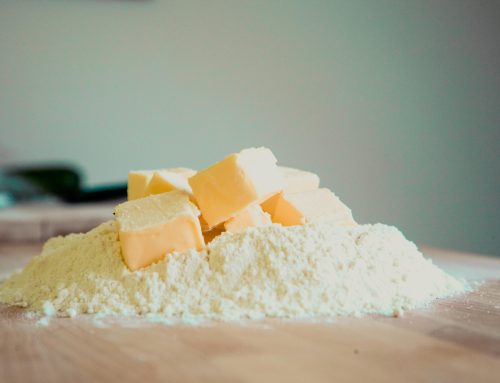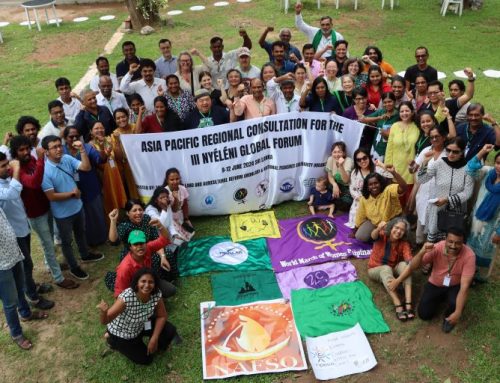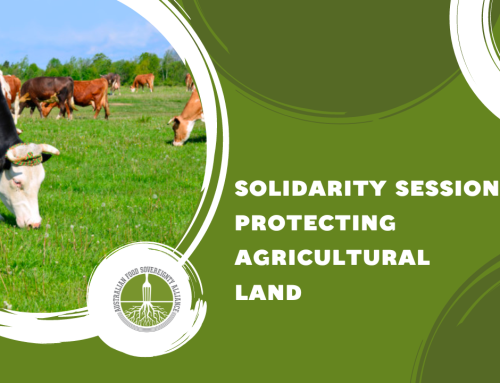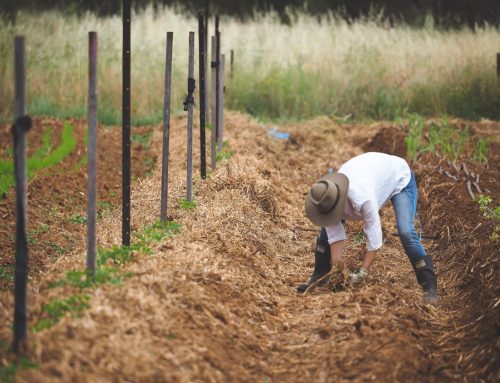Story by Russ Grayson, June 2014
JENNIFER ALDEN, the Victorian food consultant, gave me the book just a few weeks ago — a little A5-size publication with a photo of a bright red strawberry on the cover and the logo of the City of Greater Bendigo below. That was at the national gathering of the Australian City Farms & Community Gardens Network in Hobart.
I guess it wasn’t surprising that it was Jennifer who handed me the book as she’s a resident of this regional Victorian city. As she passed it over my mind flashed back over the years to my visit to Bendigo’s Gravel Hill Community Garden — I think it still exists — with its impressive food gardens, fruit trees, chooks and, surprising to me, plump, edible pigeons. This was clearly a production garden with large beds managed to produce vegetables at scale, which wasn’t all that surprising as the garden operated a community supported agriculture scheme, supplying weekly boxes of fresh, organic goodies to local subscribers.
Jennifer is a prominent local food advocate, but this isn’t a story about Jennifer, worthy that would be for someone to write, but about that little book she gave me. What intrigued me was not the strawberry on the cover but the logo below it.
Local government — doing something practical
Home Grown — a practical guide to growing your own fresh food, is a manual for domestic food production in Bendigo. It supports the production of local food in home and community gardens and, in this, it’s not unlike a publication Wollongong City Council produced some years ago, but more on that later. What it and that Wollongong book illustrate is how local government can do something practical to encourage regional food security and, in a broader sense, peoples’ sovereign right to choose the foods they want, produced by means they wish to support.
You might consider the Bendigo book something of a basic training manual for DIY food production in the city’s cool temperate climate. It includes sections on garden planning, maintenance (watering, fertilising — including production of compost by kitchen fermentation, compost bins and wormfarms — mulching, sun and frost protection), garden health, preparation and harvest and ‘beyond the garden’.
It’s that last item that makes this book stand out because it suggests that gardening need not stop at the garden gate. It links readers to local sustainability groups as well as the Bendigo Community Food Network, Food Fossickers — both of these are educational organisations — Food Swap Bendigo, the Bendigo Community and the Heathcote farmers’ markets and the Elmore Community Market.
This effectively contexts home gardening with community and social enterprise food systems in the region. Between the home and community gardens and the farmers’ markets, perhaps Bendigo folk could obtain all the food they need. If that is the situation, then here we have the basis of a regional food system that provides good food to local people while it supports local growers.
Illawarra’s edible gardening book
That other book I mentioned — Wollongong City Council’s Grow Local – Illawarra Edible Garden Guide, was produced with a NSW Environmental Trust grant and was accompanied by a similar book on growing native plants. The value of that other book is for those not interested in growing food. Growing native plants provides a more botanically diverse garden than does one infested with a lawn monoculture, and it provides habitat for small flying, walking and crawling creatures.
It’s no surprise that Wollongong City Council’s sustainability educator, Vanessa John, had a hand in the production line of these books. A keen local food advocate, Vanessa has used her council role to assist community gardeners as well as other worthwhile enterprises in the area.
Open Grow Local and you learn that it documents the work of a local family moving towards sustainable living. When the book was published they were three years into their journey and were producing a incredible 90 percent of their food needs from their urban garden. They produced much of the content for the book, including photographs, and you can follow their life experiment at: www.happyearth.com.au
A brief perusal of Grow Local reveals a substantial permaculture design influence, with its explanations of landuse zoning in the home garden, planting a food forest, principles of design and other content. One particularly useful table documents edible species with their seasonality of production, fruit fly resistance, wind tolerance, daily sun requirement and other data for this warm temperate coastal region just south of Sydney.
Why more books?
The reason I mention these books is because they show what councils can do to boost DIY, regional food production that includes the practice of resource conversion of biological wastes to fertiliser, otherwise known as composting, and, in the case of the Bendigo publication, links home food production to regional food enterprises.
Both books are quite visual in design, with lots of colour photos, tables and informative breakouts. They both promote organic gardening techniques that produce tasty, nutritious food while improving garden soils and caring for natural systems.
Bookshop shelves groan under the weight of food gardening books, so why local government manuals on food production? Answering that is simple. These are regional in content, distributed free to interested locals, use simple language without being simplistic, their content is logically arranged, they are visual in design and they benefit mainly local people. And, let’s not forget their contribution to building locally food secure cities that support the sovereignty of personal food production and choice and contribute to the building of a regional food culture.
Links to people, publications and initiatives in the story:
- Your .pdf copy of Home Grown — a practical guide to growing your own fresh food
- Jennifer Alden, food educator and advocate — Vic Health Seed Challenge Edible Bendigo
- Vanessa John, Wollongong City Council sustainability educator — YouTube of the launch of the Illawarre Food Strategy
- Connecting With Food in Greater Bendigo (pdf brochure)
- Food Fossickers
- Bendigo Community Farmers’ Market
- Heathcote Farmers’ Market
- Elmore Community Market
- Grow Local — the Illawarra Edible Garden Guide — pdf download






